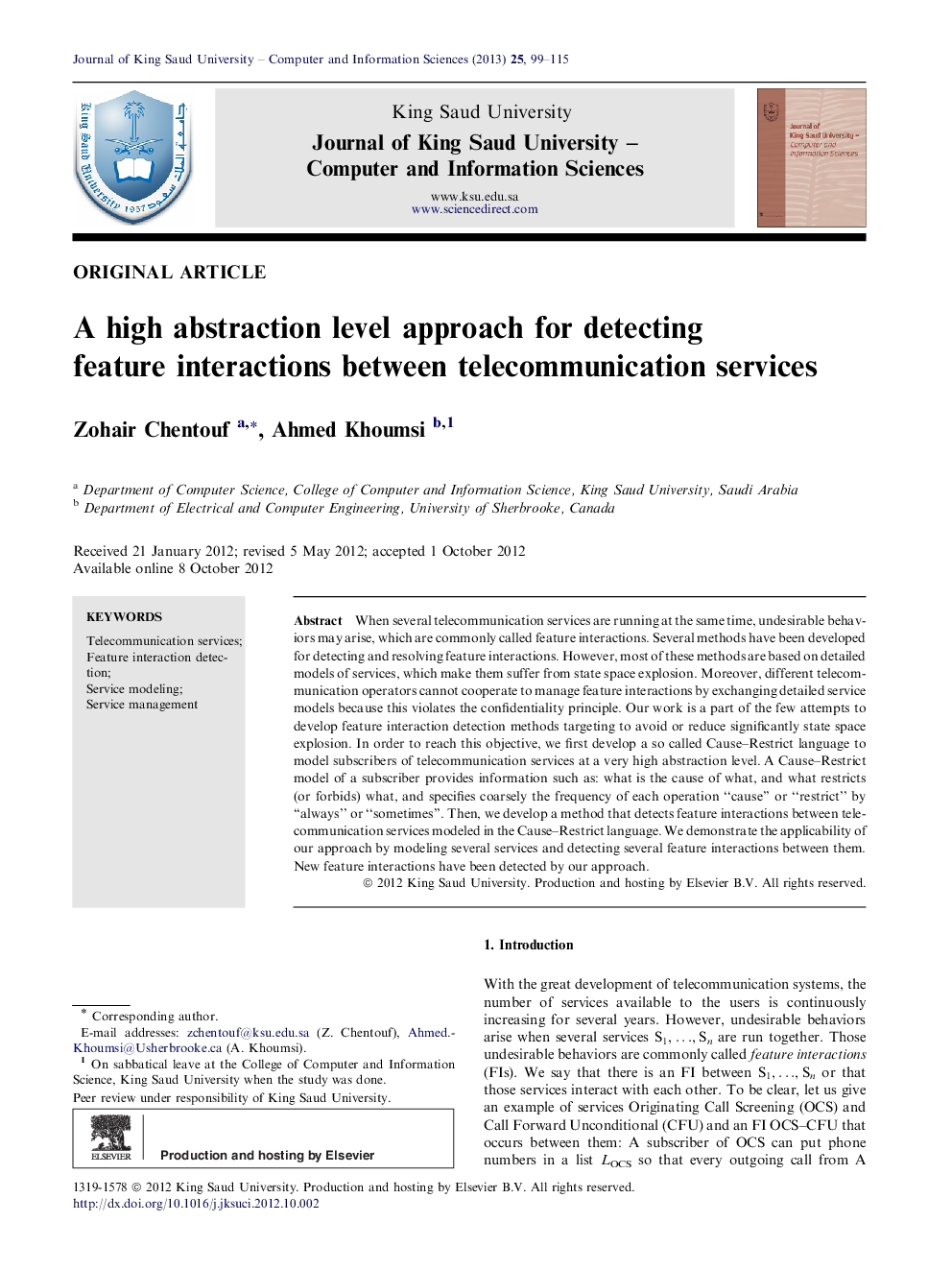| Article ID | Journal | Published Year | Pages | File Type |
|---|---|---|---|---|
| 483971 | Journal of King Saud University - Computer and Information Sciences | 2013 | 17 Pages |
When several telecommunication services are running at the same time, undesirable behaviors may arise, which are commonly called feature interactions. Several methods have been developed for detecting and resolving feature interactions. However, most of these methods are based on detailed models of services, which make them suffer from state space explosion. Moreover, different telecommunication operators cannot cooperate to manage feature interactions by exchanging detailed service models because this violates the confidentiality principle. Our work is a part of the few attempts to develop feature interaction detection methods targeting to avoid or reduce significantly state space explosion. In order to reach this objective, we first develop a so called Cause–Restrict language to model subscribers of telecommunication services at a very high abstraction level. A Cause–Restrict model of a subscriber provides information such as: what is the cause of what, and what restricts (or forbids) what, and specifies coarsely the frequency of each operation “cause” or “restrict” by “always” or “sometimes”. Then, we develop a method that detects feature interactions between telecommunication services modeled in the Cause–Restrict language. We demonstrate the applicability of our approach by modeling several services and detecting several feature interactions between them. New feature interactions have been detected by our approach.
